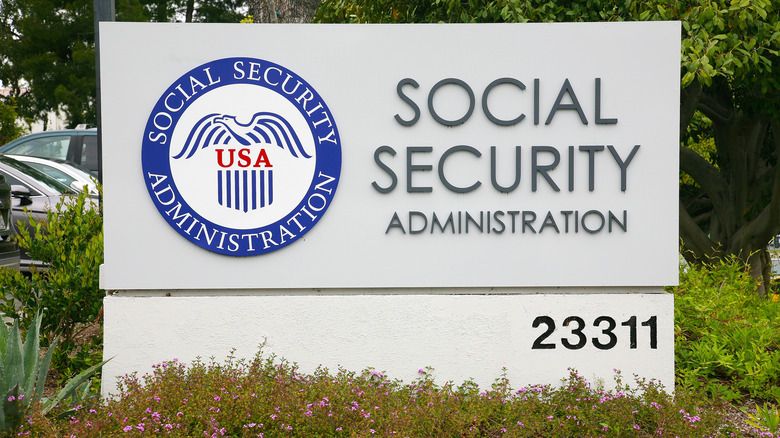Will The Government Shutdown Affect Social Security's COLA In 2026?
Spending power means a lot to most Americans, especially those who are living on a fixed income. 73.9 million Americans rely on Social Security, meaning that any changes to the spending power of Social Security benefits impacts at least one fifth of the United States population. Retirees may feel most impacted when considering the potentially higher or lower Social Security benefit amount they might receive as a result of the annual cost-of-living adjustment, or COLA — which is usually announced every year on October 15. The raising or lowering of COLA directly impacts the size of a Social Security benefits check. A lot happened between when the 2025 COLA was announced and when it was actually implemented – and this has left many beneficiaries worrying about what will happen to the 2026 COLA rate, which is now also contending with a government shutdown.
To be clear: Social Security benefit funds are considered mandated spending that does not need congressional approval. This means benefit payments will continue to be made during the shutdown. However, new Social Security beneficiaries and retirees should be aware of how the shutdown will impact Social Security processes and procedures. Until any sort of agreement is reached to end the shutdown — which started on October 1, 2025 as the result of a battle over spending — most official business has ground to a halt, or at least to an incredibly slow pace, including the announcement of the 2026 COLA rate.
Understanding COLA calculations
COLA was first provided in 1972, and was made an automatic annual addition in 1975. The Great Inflation of the 1970s crushed the spending power of the American dollar, and Social Security beneficiaries suffered as a result. By tying a cost-of-living allowance to inflation-impacted data, COLA rates were intended to better adjust benefit payments to reflect the real world that beneficiaries are living — and spending — in. COLA is calculated using a formula in the Social Security Act, and is dependent on data from the Consumer Price Index for Urban Wage Earners and Clerical Workers (CPI-W). This data is calculated monthly by the Bureau of Labor Statistics, and COLA is computed by comparing third quarter CPI-W date from the current year to the average of third quarter data from the previous year. If an increase exists between the prior year and the current year, it is calculated to create the COLA rate for the next calendar year.
However, it's worth noting that the COLA rate is often disappointing to beneficiaries. With current estimates between 2.7% to 3% for 2026, retirees might not find that the COLA rate truly keeps up with anticipated inflation throughout 2026. While this COLA increase does mean slightly increased spending power for beneficiaries, it also marks yet another year that Social Security is underpaying those who rely on it most during times of rising inflation. Plus, senior advocacy groups were worried about the 2026 Social Security increase even prior to the government shutdown.
When will the 2026 COLA rate be announced?
Typically, the CPI-W data for the final month of the third quarter is published yearly by the Bureau of Labor Statistics on October 15, with the COLA announcement by the Social Security Administration (SSA) happening soon after. With that said, given the shutdown some adjustments have already been made, and announced.
On October 10, 2025, the U.S. Bureau of Labor Statistics published a release that they would publish CPI data from September 2025 by 8:30 AM Eastern Time on October 24, 2025 instead of the typical October 15 date. This short delay in data announcement should therefore not have too great of an impact on COLA calculations, nor Social Security Benefits on the whole. However, the length of the government shutdown could still delay 2026 payment benefit letters and online updates, not to mention any and all customer service-related response times. It's worth noting that the SSA must make their COLA announcement by November 1 in order to be within their own guidelines.


